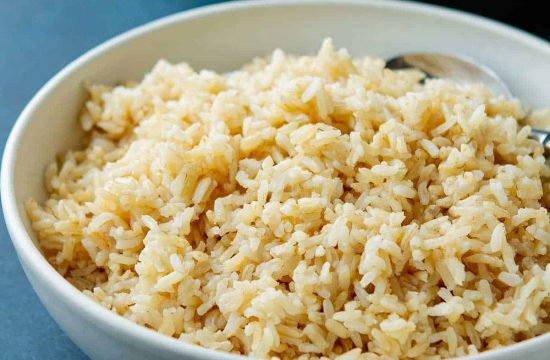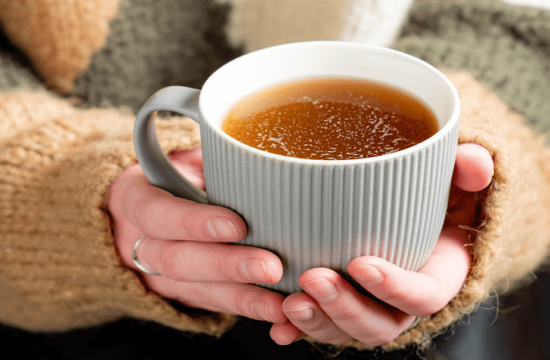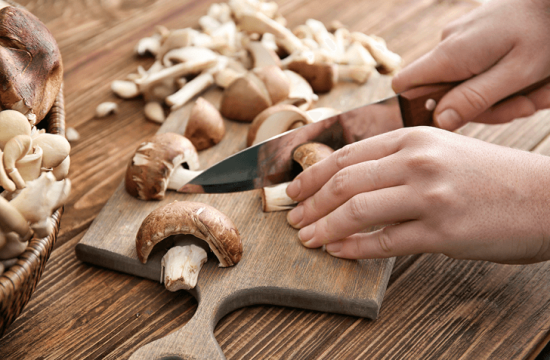The 14th chapter of Nidanasthanam of Ashtanga Hridayam is named as Kushtha-Shvitra-Krimi Nidanam Adhyayah. This chapter deals with the explanation of ‘diagnosis of skin diseases, leucoderma and worms’.
The topics covered in this chapter include –
– Kushtha Nidana – causes of skin diseases
– Effect of Kushtha
– Kushtha Bheda – types
– Kushtha Purvarupa – premonitory symptoms
– Kapala Kushtha
– Udumbara Kushtha
– Mandala Kushtha
– Vicharkika Kushtha
– Rishyajihva Kushtha
– Charma, Ekakhya, Kitibha, Sidhma, Alasaka, Vipadika Kushtha
– Dadru Kushtha
– Shataru Kushtha
– Pundarika, Visphota, Pama, Carmadala, Kakana Kushtha
– Identifying doshas in Kushtha
– Dhatugata Kushta – skin diseases located in various tissues
– Shvitra Nidanam – diagnosis of leucoderma
– Shvitra types according to predominant dosha, their symptoms
– Shvitra sadhyasadhyata – prognosis of leucoderma
– Shvitra types according to predominant dosha, their symptoms
– Krimi – worm infestation, diagnosis of parasites
– Bahya Krimi – external worms / parasites
– Abhyantara Krimi – internal worms / parasites
– Kaphaja Krimi
– Raktaja Krimi
– Purisaja Krimi
Pledge by the author(s)
अथात: कुष्ठश्वित्रकृमिनिदानं व्याख्यास्याम ।
इति ह स्माहुरात्रेयादयो महर्षय: ।
After having offered prayers to the God, henceforth we are going to explain the chapter pertaining to the explanation of ‘diagnosis of skin diseases, leucoderma and worms’. Thus say (pledge) atreya and other sages.
Kushtha Nidana: Causative factors
मिथ्याहारविहारेण विशेषेण विरोधिना ।
साधुनिन्दावधान्यस्वहरणाद्यैश्च सेवितैः ॥ १ ॥
पाप्मभिः कर्मभिः सद्यः प्राक्तनैर्वेरिता मलाः ।
सिराः प्रपद्य तिर्यग्गास्त्वग्लसीकासृगामिषम् ॥ २ ॥
दूषयन्ति श्लथीकृत्य निश्चरन्तस्ततो बहिः ।
त्वचः कुर्वन्ति वैवर्ण्यं दुष्टाः कुष्ठमुशन्ति तत् ॥ ३ ॥
The malas- doshas getting aggravated by unsuitable foods and activities, especially by foods which are incompatible, by sinful acts of the present life such as scolding / defaming or killing the pious- ascetics, elders, preceptors etc. robbing the properties of others etc. or sinful act of the previous lives; Doshas invade the widespread body channels inside, vitiate the skin, lasika- lymph, blood and muscles Doshas make them flabby- loose, and spreads outwards cause discoloration of the skin; this disease is called Kushtha
Note: ’Kushtha’, in general means skin diseases.
Effect of Kushtha
कालेनोपेक्षितं यस्मात्सर्व कृष्णाति तद्वपुः ।
प्रपद्य धातून्व्याप्यान्तः सर्वान् संक्लेद्य चावहेत् ॥४॥
सस्वेदक्लेदेसङ्कोथान् कुमीन् सुक्ष्मान् सुदारुणान् ।
लोमत्वक्स्नायुधमनीतरुणास्थीनि यैः क्रमात् ॥५॥
भक्षयेच्छ्वित्रमस्माच्च कुष्टबाह्यमुदाहृतम् ।
Allowed the lapse of time, neglected for a long time, it makes the entire body look ugly by spreading to all the tissues, spreading inside the body, causing excessive moistness inside them, leading to flow of sweat and exudations, putrefaction, formation of minute- invisible microbes / worms – bacilli, bacteria, virus etc. which are very troublesome; these microbes, eat away the hairs, skin, tendons, arteries, veins and cartilages one after the other. Because of this, shvitra- leucoderma is described as a different than Kushtha.
Notes: Though shvitra- leucoderma also causes discoloration of the skin, it does not involve other tissues nor produce exudation, putrefaction, appearance of bacteria, mutilation of the part affected etc. hence it is a different disease altogether, non- contagious and non-mutilating.
Kushtha Bheda: Types
कुष्ठानि सप्तधा दोषैः पृथङ्मिश्रैः समागतैः ॥ ६ ॥
सर्वेष्वपि त्रिदोषेषु व्यपदेशोऽधिकत्वतः ।
वातेन कुष्ठं कापालं पित्तादौदुम्बरं कफात् ॥ ७ ॥
मण्डलाख्यं विचर्ची च ऋक्षाख्यं वातपित्तजम् ।
चर्मैककुष्ठकिटिभसिध्मालसविपादिकाः ॥ ८ ॥
वातश्लेष्मोद्भवाः श्लेष्मपित्ताद्दद्रूशतारुषी ।
पुण्डरीकं सविस्फोटं पामा चर्मदलं तथा ॥ ९ ॥
सर्वैः स्यात् काकणं पूर्वं त्रिकं दद्रु सकाकणम् ।
पुण्डरीकर्क्षजिह्वे च महाकुष्ठानि सप्त तु ॥ १० ॥
Kushtha is of seven types. 3 types, by each dosha separately, by the combination of any two and by all of them together. Though all types are caused by the combination of all three doshas, their classification as above is on the basis of predominance. From the predominance of vata, Kapala Kushta is caused; from pitta, arises audumbara; from kapha arise mandala and vicharchika; from vatapitta arises rishyajihva; from vata and Kapha Doshas, carma, ekaKushtha, kitibha, sidhma, alasa and Vipadika types of skin diseases are formed. Due to Kapha and Pitta Dosha, dadru, shataru, pundarika, visphota, pama and carmadala skin diseases are caused from all doshas together, kakana skin disease is formed. Of these, the first three- kapala, udumbara, mandala, dadru, kakana, pundarika and Rishyajihva these seven are mahaKushthas – skin diseases of greater importance.
Purvarupa: Premonitory symptoms
अतिश्लक्ष्णखरस्पर्शखेदास्वेदविवर्णताः ।
दाहः कण्डूस्त्वचि स्वापस्तोदः कोठोन्नतिः श्रमः ॥ ११ ॥
व्रणानामधिकं शूलं शीघ्रोत्पत्तिश्चिरस्थितिः ।
रूढानामपि रूक्षत्वं निमित्तेऽल्पेऽपि कोपनम् ॥ १२ ॥
रोमहर्षोऽसृजः कार्ष्ण्य कुष्ठलक्षणमग्रजम् ।
The skin is very smooth, hard to touch, with or without sweating, discoloration, burning sensation, itching, loss of tactile sensation- numbness, pricking pain, elevated raised patches of skin, fatigue, severe pain in the wounds, which arise quickly and stay long, roughness of wounds, even in those wounds which have healed, the wounds get exacerbated- flare up even with trivial causes, horripilation, black color of the blood are the premonitory symptoms of Kushtha.
Kapala Kushtha
कृष्णारुणकपालाभं रूक्षं सुप्तं खरं तनु ॥ १३ ॥
विस्तृतासमपर्यन्तं हृषितैर्लोमभिश्चितम् ।
तोदाढ्यमल्पकण्डूकं कापालं शीघ्रसर्पि च ॥ १४ ॥
Skin patches which are blackish red, resembling potsherds, dry, lacks sensation, rough, thin, wide, of uneven edges, studded with more hairs, having horripilation, with severe puncturing pain, less of itching, and spreading quickly are the features of Kapala Kushtha.
Udumbara Kushtha
पक्वोदुम्बरताम्रत्वग्रोम गौरसिराचितम् ।
बहलं बहलक्लेदरक्तं दाहरुजाधिकम् ॥ १५ ॥
आशूत्थानावदरणकृमि विद्यादुदुम्बरम् ।
Skin patches resembling ripe fruit of udumbara, – dusky red with coppery-red skin, hairs studded with white colored veins, thick, exuding large quantities of moisture and blood, with severe burning sensation and severe pain, quick in manifestation, putrefaction and appearance of microbes, worms indicate Udumbara Kushtha.
Mandala Kushtha
स्थिरं स्त्यानं गुरु स्निग्धं श्वेतरक्तमनाशुगम् ॥ १६ ॥
अन्योऽन्यसक्तमुत्सन्नं बहुकण्डूस्रुतिक्रिमि ।
श्लक्ष्णपीताभपर्यन्तं मण्डलं परिमण्डलम् ॥ १७ ॥
Skin patches static, hard, heavy, unctuous, whitish-red, not developing quickly, joined with one another, raised, elevated, with excessive itching, exudation and worms- bacteria/ bacilli; smooth, yellowish edges and circular are the features of Mandala Kushtha.
Vicharchika Kushtha
सकण्डूपिटिका श्यावा लसीकाढ्या विचर्चिका ।
Vicharchika has eruptions associated with itching, black, grey and full of lymph, secretion
Rishyajihva Kushtha
परुषं तनु रक्तान्तमन्तःश्यावं समुन्नतम् ॥ १८ ॥
सतोददाहरुक्क्लेदं कर्कशैः पिटिकैश्चितम् ।
ऋक्षजिह्वाकृति प्रोक्तमृक्षजिह्वं बहुक्रिमि ॥ १९ ॥
Skin patches are rough, thin, with red colored edges and black in the center, greatly raised, with pricking pain , burning sensation, constant pain and exudation, studded with rough- hard eruptions, resembling the tongue of the black deer, and having numerous worms / microbes, are the features of Rishyajihva Kushtha.
Charma, Ekakhya, Kitibha, Sidhma, Alasaka, Vipadika Kushtha
हस्तिचर्मखरस्पर्शं चर्मैकाख्यं महाश्रयम् ।
अस्वेदं मत्स्यशकलसन्निभं किटिभं पुनः ॥ २० ॥
रूक्षं किणखरस्पर्शं कण्डूमत् परुषासितम् ।
सिध्मं रूक्षं बहिः स्निग्धमन्तर्घृष्टं रजः किरेत् ॥ २१ ॥
श्लक्ष्णस्पर्शं तनु श्वेतताम्रं दौग्धिकपुष्पवत् ।
प्रायेण चोर्ध्वकाये स्याद्गण्डैः कण्डूयुतैश्चितम् ॥ २२ ॥
रक्तैरलसकं पाणिपाददार्यो विपादिकाः ।
तीव्रार्त्यो मन्दकण्ड्वश्च सरागपिटिकाचिताः ॥ २३ ॥
Skin resembling that of the elephant and rough to touch is Charmakhya Kushtha. In Eka Kushtha the lesion is very wide – covers a large area, non –sweating and resembles the skin of the fish Kitibha Kushtha has dry skin; rough and hard, creating sound on scratching, itching, hard and black.In Sidhma the patches –skin is dry outside and moist inside, gives out small scales when scratched, smooth to touch, thin, whitish coppery colored resembling flower of dugdhika – Euphorbia hirta usually common in the upper parts of the body. Alasaka Kushtha is studded with small tumors; with itching and red in color. Vipadika Kushtha causes cracks/ fissures in the hands and feet, has severe pain and mild itching, studded with red-colored eruptions.
Dadru Kushtha
दीर्घप्रताना दूर्वावदतसीकुसुमच्छविः ।
उत्सन्नमण्डला दद्रूः कण्डूमत्यनुषङ्गिणी ॥ २४ ॥
Skin patches long and wide like the blade of Durva – Cynodon dactylon grass, has the color similar to that of the flower of Atasi – Linum usitatissimum, raised, round patch with itching persisting for a long time are the features of Dadru Kushtha.
Shataru Kushtha
स्थूलमूलं सदाहार्ति रक्तश्यावं बहुव्रणम् ।
शतारुः क्लेदजन्त्वाढ्यं प्रायशः पर्वजन्म च ॥ २५ ॥
Shataru Kushtha has multiple ulcers, which are deep seated, having burning sensation and pain, reddish-black in color, with excessive exudates and worms, commonly occurring on joints.
Pundarika
रक्तान्तमन्तरा पाण्डु कण्डूदाहरुजान्वितम् ।
सोत्सेधमाचितं रक्तैः पद्मपत्त्रमिवांशुभिः ॥ २६ ॥
घनभूरिलसीकासृक्प्रायमाशु विभेदि च ।
पुण्डरीकं
Skin patches with red edges and white inside, with itching, burning sensation and pain, raised, covered with reddish dust resembling the petal of lotus, exudes thick and copious secretions and probably bloody, and splitting quickly are the features of Pundarika Kushtha.
Visphota
तनुत्वग्भिश्चितं स्फोटैः सितारुणैः ॥ २७ ॥
विस्फोटं Visphota Kushtha has thin skin patchescovered with blackish red eruptions.
Pama
पिटिकाः पामा कण्डूक्लेदरुजाधिकाः ।
सूक्ष्माः श्यावारुणा बह्व्यः प्रायः स्फिक्पाणिकूर्परे ॥ २८ ॥
Pama Kushtha has eruptions which have severe itching, more exudates and pain, small in size, greyish red and large in number commonly seen on the buttocks, hands and elbows.
Charmadala
सस्फोटमस्पर्शसहं कण्डूषातोददाहवत् ।
रक्तं दलच्चर्मदलं
Charmadala Kushtha has blisters, lesions are painful to touch, associated with itching, heat, pricking, and burning sensation, red in color and the skin is cracked.
Kakana Kushtha
काकणं तीव्रदाहरुक् ॥ २९ ॥
पूर्वं रक्तं च कृष्णं च काकणन्तीफलोपमम् ।
कुष्ठलिङ्गैर्युतं सर्वैर्नैकवर्णं ततो भवेत् ॥ ३० ॥
Kakana Kushtha has severe burning sensation and pain, red and black at the time of onset, resembling the seeds of Kakananti – Abrus precatorius, then gradually attaining all the features of Kushtha lesions have many colors.
Identifying doshas in Kushtha
दोषभेदीयविहितैरादिशेल्लिङ्गकर्मभिः ।
कुष्ठेषु दोषोल्बणतां In Kushtha, the recognition of the aggravation of the doshas,the symptoms and functions arising then on, are the same as have been described in doshabhediya (chapter 12 of sutrasthana).
Sadhya asadhyata: Prognosis
सर्वदोषोल्बणं त्यजेत् ॥ ३१ ॥
रिष्टोक्तं यच्च यच्चास्थिमज्जशुक्रसमाश्रयम् ।
याप्यं मेदोगतं कृच्छ्रं पित्तद्वन्द्वास्रमांसगम् ॥ ३२ ॥
अकृच्छ्रं कफवाताढ्यं त्वक्स्थमेकमलं च यत् ।
The skin diseases of below symptoms should be rejected – difficulty to cure Kushtha which has been caused by the aggravation of all the doshas, which has been described in rista, chapter 5 of sarirasthana and that which has localised in the bone, bone marrow and semen. Skin diseases afflicting fat tissue is Yapya – requires treatment for lifetime, that caused by pitta, in combination with any other dosha and localised in blood and muscle is difficult to cure Easy to cure skin diseases are those having predominance of kapha and vata and localised in the skin only and associated with only one Dosha.
Dhatugata Kushta: Located in various tissues
तत्र त्वचि स्थिते कुष्ठे तोदवैवर्ण्यरूक्षताः ॥ ३३ ॥
स्वेदस्वापश्वयथवः शोणिते पिशिते पुनः ।
पाणिपादाश्रिताः स्फोटाः क्लेदः सन्धिषु चाधिकम् ॥ ३४ ॥
कौण्यं गतिक्षयोऽङ्गानां दलनं स्याच्च मेदसि ।
नासाभङ्गोऽस्थिमज्जस्थे नेत्ररागः स्वरक्षयः ॥ ३५ ॥
क्षते च कृमयः शुक्रे स्वदारापत्यबाधनम् ।
यथापूर्वं च सर्वाणि स्युर्लिङ्गान्यसृगादिषु ॥ ३६ ॥
Kusta localized in the skin causes pricking pain, discoloration and dryness; skin diseases localized in the blood it causes- excessive sweating, loss of sensitization and swelling; in skin diseases localized in the muscles it gives rise to eruptions / boils in the hands and feet, profuse exudation, appears specially on the joints; localized in fat tissue, it causes shortening of the arm- by mutilation, inability to walk and splitting of the body parts; localized in the bones and morrow, the skin disease produces mutilation of the nose, redness of the eyes, loss of voice and appearance of worms in the wounds; localized in the semen- reproductive tissue, skin disease it spreads to the wife and children. They- wife and children will develop all the symptoms of Kushtha described so far, caused by vitiated blood etc. tissues. Thus ends the diagnosis of Kushtha.
Shvitra Nidanam: Diagnosis of leucoderma
कुष्ठैकसम्भवं श्वित्रं किलासं दारुणं च तत् ।
निर्दिष्टमपरिस्रावि त्रिधातूद्भवसंश्रयम् ॥ ३७ ॥
Shvitra – leucoderma also known as kilasa and daruna, is similar to Kushtha Shvitra is non exudating, arises from the aggravation of the Doshas and three dhatus – Rakta, Mamsa and Medas.
Shvitra types and symptoms as per Dosha dominance
वाताद्रूक्षारुणं पित्तात्ताम्रं कमलपत्रवत् ।
सदाहं रोमविध्वंसि कफाच्छ्वेतं घनं गुरु ॥ ३८ ॥
सकण्डु च क्रमाद्रक्तमांसमेदःसु चादिशेत् ।
वर्णेनैवेदृगुभयं कृच्छ्रं तच्चोत्तरोत्तरम् ॥ ३९ ॥
Due to predominance of vata, shvitra skin patches are dry and aruna- light red; due to pitta, it is of coppery red in color, resembling lotus petal, has burning sensation and destruction of body hairs from kapha, the skin is white, thick, heavy and has itching; these- three types of Shvitra are localized in the blood, muscle and fat tissue respectively. Shvitra associated with respective Doshas and Dhatus, with respective colours each succeeding type is more difficult to cure – than the previous one.
Notes:
The above statement is explained by Arunadatta as follows; Vataja Shvitra is aruna- light red in color, localized in the rakthadhathu- blood and Krichra- difficult or cure; pittajashvitra is Tamra Bhasma – Bhasma (calx) of Copper- copper like or lotus petal like in color, localized in Mamsadhatu- muscle and Krichratara- more difficult to cure; Kaphaja Shvitra is Sveta- white localized in medas Dhatu- fat and Krichratama- most difficult to cure.
Shvitra sadhya asadhyata: Prognosis of leucoderma
अशुक्लरोमाबहलमसंसृष्टं मिथो नवम् ।
अनग्निदग्धजं साध्यं श्वित्रं वर्ज्यमतोऽन्यथा ॥ ४० ॥
गुह्यपाणितलौष्ठेषु जातमप्यचिरन्तनम् ।
Shvitra- Leucoderma having black hairs, patches not thick, not joined together, of recent origin and that not caused by burning by fire are curable; whereas Shvitra with other features is worth rejecting, so also that arising on the genitals, palms, soles, and lips, even though not long standing.
Spreading nature of skin and eye diseases
स्पर्शैकाहारशय्यादिसेवनात् प्रायशो गदाः ॥ ४१ ॥
सर्वे सञ्चारिणो नेत्रत्वग्विकारा विशेषतः ।
Generally all diseases spread from person to person by contact, using the same food being consumed by a patient, use of same vessels, utensils etc. bed etc. clothes, garlands and any other article used by the patient; especially in those who are indulged in lot of travelling, the diseases of the eyes and skin mainly manifest by this method. Thus ends the diagnosis of shvitra- Leucoderma.
Krimi Bheda: Kinds of worms
कृमयस्तु द्विधा प्रोक्ता बाह्याभ्यन्तरभेदतः ॥ ४२ ॥
बहिर्मलकफासृग्विड्जन्मभेदाच्चतुर्विधाः ।
नामतो विंशतिविधा
Krimi – worms, parasites are of two kinds viz Bahya –external and Abhyantra- internal and of four kinds on the basis of their origin viz Bahirmala – originating from external wastes-sweat, from kapha, blood and faeces and twenty types, known by their names.
Bahya Krimi: External worms / parasites
बाह्यास्तत्रामृजोद्भवाः ॥ ४३ ॥
तिलप्रमाणसंस्थानवर्णाः केशाम्बराश्रयाः ।
बहुपादाश्च सूक्ष्माश्च यूका लिक्षाश्च नामतः ॥ ४४ ॥
द्विधा ते कोठपिटिकाकण्डूगण्डान् प्रकुर्वते ।
The external arise from non-cleanliness, resemble tila-seed of sesame in size, shape, and color, dwell in the hairs and clothes, have many legs, minute in size; are of two kinds, namely Yuka and liksa; they produce rashes, eruptions, itching and small tumors.
Notes: Yuka and likes are the two kinds of louse, the louse and body louse, both found in persons who are unclean. Head louse in black resides at the root of the hairs of the head. Body louse is white resides in the hairs of the axilla and pubis and take shelter inside the flods of clothes. Both spread from person to person by direct migration or indirect migration though combs, dress etc. or by their eggs being carried by air or hairs.
Abhyantara Krimi: Internal worms / parasites
कुष्ठैकहेतवोऽन्तर्जाः श्लेष्मजास्तेषु चाधिकम् ॥ ४५ ॥
मधुरान्नगुडक्षीरदधिसक्तुनवौदनैः ।
शकृज्जा बहुविड्धान्यपर्णशाकोलकादिभिः ॥ ४६ ॥
Those born inside, have the same causes as those of Kushtha in addition, ingestion of sweet foods, molasses, milk, curds- yoghurt, flour of grains and freshly harvested grains are special for slesmaja- Kaphaja Krimi, those grains and leafy vegetables which produce more feces and those pulses which are in green state are special for Sakrit-ja- worms born from feces.
Kaphaja Krimi
कफादामाशये जाता वृद्धाः सर्पन्ति सर्वतः ।
पृथुब्रध्ननिभाः केचित् केचिद्गण्डूपदोपमाः ॥ ४७ ॥
रूढधान्याङ्कुराकारास्तनुदीर्घास्तथाणवः ।
श्वेतास्ताम्रावभासाश्च नामतः सप्तधा तु ते ॥ ४८ ॥
अन्त्रादा उदरावेष्टा हृदयादा महाकुहाः ।
कुरवो दर्भकुसुमाः सुगन्धास्ते च कुर्वते ॥ ४९ ॥
हृल्लासमास्यस्रवणमविपाकमरोचकम् ।
मूर्छाछर्दिज्वरानाहकार्श्यक्षवथुपीनसान् ॥ ५० ॥
Those arising from Kapha, reside in the Amasaya-stomach, when increased in numbers they move everywhere- inside the alimentary tract some have big buttocks, some resemble earthworms, some others are like the sprouts of germinating grains; are thin, long or minute, white or coppery in color; they are seven species by name, viz antrada, Udaravesta, Hrdayada, Mahakuha, Kurava, Darbhakusuma and sugandha; they give rise to Nausea, excessive salivation, indigestion, loss of taste, fainting, vomiting, fever, flatulence, emaciation, excessive sneezing and nasal catarrh.
Raktaja Krimi
रक्तवाहिसिरोत्थाना रक्तजा जन्तवोऽणवः ।
अपादा वृत्तताम्राश्च सौक्ष्म्यात्केचिददर्शनाः ॥ ५१ ॥
केशादा रोमविध्वंसा रोमद्वीपा उदुम्बराः ।
षट् ते कुष्ठैककर्माणः सहसौरसमातरः ॥ ५२ ॥
Those arising from blood reside in the blood vessels worms are minute, devoid of legs, round, copper colored, some are invisible being very minute; Rakja Krimi are of six species by name- kesada, romavidhvama, lomadvipa, udumbara, Aurasa and Matara; these give rise to the same symptoms as those Kushtha.
Purishaja Krimi
पक्वाशये पुरीषोत्था जायन्तेऽधोविसर्पिणः ।
वृद्धाः सन्तो भवेयुश्च ते यदामाशयोन्मुखाः ॥ ५३ ॥
तदास्योद्गारनिःश्वासा विड्गन्धानुविधायिनः ।
पृथुवृत्ततनुस्थूलाः श्यावपीतसितासिताः ॥ ५४ ॥
ते पञ्च नाम्ना कृमयः ककेरुकमकेरुकाः ।
सौसुरादाः सुलूनाख्या लेलिहा जनयन्ति च ॥ ५५ ॥ विड्भेदशूलविष्टम्भकार्श्यपारुष्यपाण्डुताः ।
रोमहर्षाग्निसदनगुदकण्डूर्विनिर्गमात् ॥ ५६ ॥ Those arising from faeces take their origin in / reside in the pakvasaya- large intestine,usually moving downwards; when increased in number they travel up towards the amasaya- stomach and small intestine, then produce smell of feces in the mouth, bad smell upon belching and expiration; they are thick, round, thin- thread like or thick, blue, yellow, white or black in color; and of five names kakeruka, makerukah, sausuradah, suluna and leliha; they give rise to diarrhea, abdominal pain, stasis of food undigested for long periods, emaciation, roughness of the skin, anemia horripilation, weakness of digestion and itching in the rectum- anus by coming out of it.
Notes: Mention of sweet foods, etc. as the cause is to stress that such foods cause weakness of digestive activity which in turn helps the growth of para sites inside the alimentary canal. Kaphaja and purisajakrimi are intestinal parasites such as round worms-ascaris lumbricoides hookworms worm-tenia solium, tenia saginata, many kinds of Amoeba –entamoeba parasites gain entry into the human body though infected water, articles proper cleaning and cooking. In persons who have strong digestive power, those who have poor digestive power, the acid being weak and insufficient the ova etc. escape into the intestines, hatch there and make their living, giving rise to many troubles to the person. Some of the names of these parasites are based on their physical features and function while some others are traditional names, different from one text to the other. It has not been possible to identify all of them with common parasites affecting the Indian population in the present day.
Raktajakrimi are the various parasites- of malaria, filarial bacilli-leprosy, virus etc. found in the blood, organs such liver and spleen. These come into the human body though the bites of mosquitoes, fleas, bed bug etc. all the parasites described above are called vaikarikakrimi- pathogenic worms
There is mention of another kind of worms also, known as Sahaja krimi-worms born along with the person-which are avaikarika-non pathogenic-present in the alimentary canal which help in the maintenance of health.
इति श्री वैद्यपति सिंहगुप्तसूनु श्रीमद्वाग्भटविरचितायामष्टाङ्गहृदयसंहिताया तृतीये निदानस्थानेकुष्ठश्वित्रकृमिननिदानं नाम चतुर्दशोऽध्याय: ।।१४॥
Thus ends the fourteenth chapter Kushtha- Shvitra-Krimi-Nidana, of Nidana sthana, composed by Srimad Vagbhata, son of Vaidyapati Simhagupta.















